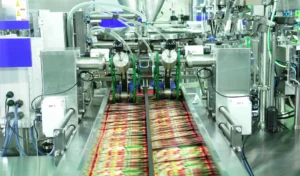It’s summer in the northern hemisphere. As the peak time of year for pest problems, pest control in summer is always crucial. In the face of the increasing pest problems, we should bear in mind the importance of the safe use of insecticides while taking all kinds of extermination and control measures. Both effective and safe prevention and control measures are the goals. Today, in this blog, we will introduce pyrethroid insecticides. They are a class of insecticides that can be both highly effective and safe.
Pyrethroids are a special kind of chemical active ingredient. They are now found in many pyrethroid insecticides. It is similar to the name of a chemical called pyrethrum or pyrethrin. So, what exactly is pyrethroid? What does it have to do with pyrethrum? You can read on to find out.
What is pyrethrin?
Pyrethrin is a particularly old insecticide ingredient. It was first extracted by drying and crushing the flower heads of Chrysanthemum cinerariifolium or C. coccineum. And pure pyrethrums are called pyrethrins. Pyrethrins are effective insecticide ingredients because they are effective against many insects. In addition, pyrethrins has the advantage of low toxicity to humans. So, pyrethrins are still very popular ingredients in the insecticide field today. In addition, pyrethrins will be broken down within a few minutes to a few hours after application, so that there will be no long-term negative impacts on the environment. This may slightly affect its effectiveness, but under normal circumstances, an average of a few hours will be enough to complete the extermination of most pests.

What is a pyrethroid?
Now let’s have a look at pyrethroids. Just now we’ve introduced some of the basics of pyrethrins. Theoretically, pyrethrins should have broad prospects of development for its advantages. But the truth is that the natural supply of pyrethrins is quite limited, so their price has always been high. In this context, finding effective alternatives to pyrethrins became an urgent task for chemists who focused on insecticide composition after World War II. As a result, in the 1950s, a synthetic pyrethrin called allethrin was born. It belongs to the 1st generation of synthetic pyrethroids.
Later, with the gradual mastery of synthetic technology, more and more pyrethroid ingredients emerged. In the 1960s, the 2nd generation of pyrethroids came out, including bioallethrin, resmethrin, tetramethrin and phenothrin. The 2nd generation of pyrethroids was significantly more toxic to insects, and they are still widely used in many insecticide products. In and after 1960s, with the development of chemical synthesis technology, new pyrethroid ingredients such as permethrin and fenvalerate came to being. They have also been shown to be more toxic to insects while less harmful to people and pets. They can also last for longer period of time after applied in the environment. The continuous enrichment of pyrethroids can help to reduce the environmental impacts from the traditional insecticides, which is beneficial for the sustainable development of agriculture.
Characteristics of Pyrethroids
Although all pyrethroids are within the same category, they are still different when their effects are talked about. But generally, pyrethroid insecticides do have some similar characteristics such as:
- Only a low dose will be enough to achieve a favorable and rapid insect killing effect.
- They are relatively low toxic to mammals and birds.
- They are highly toxic to fish. So, they are not suitable for the application in water.
- They have great killing effects on chewing insects. They can even be absorbed by the insects when they just walk over.
- They are poorly soluble in water.
- They tend to bind tightly to the soil and organic matters, so that they cannot easily penetrate into the soil to kill the insects within.

Identification of Pyrethroid Insecticides
You can simply make the judgement whether an insecticide product contains pyrethroids or not by looking at its active ingredients involved. Usually, chemicals or active ingredients contained in an insecticide will be listed on its label. Since the chemical names of the chemicals or active ingredients are usually terms, they tend to be quite long. In addition to the chemical names of the ingredients, an insecticide often has a product name, or you can call it common name, to make it easier to distinguish from others and to be remembered. Their product names tend to be printed in large fonts, with their chemical ingredients often placed below or after their product names. Chemical names for pyrethroids usually have suffixes like -ate or -thrin such as esfenvalerate, permethrin, resmethrin, cyfluthrin, allethrin, etc.



